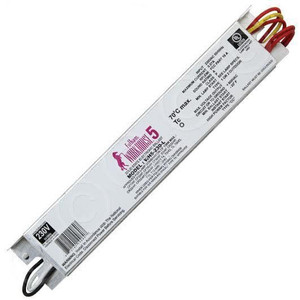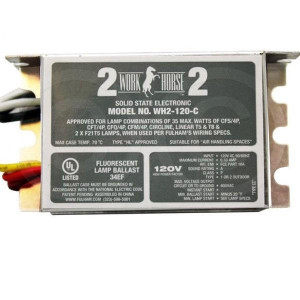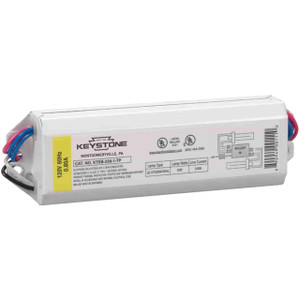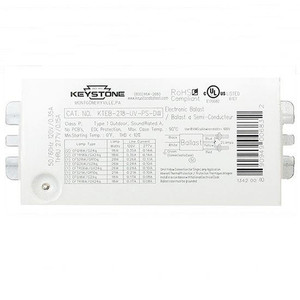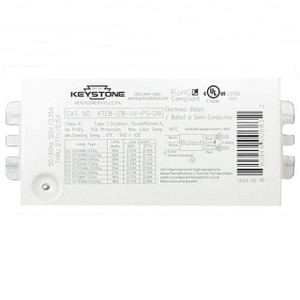-
MSRP$108.99$44.77
-
MSRP$56.99$25.77
-
MSRP$20.00$10.84
-
MSRP$55.99$31.57
-
$19.56
-
MSRP$39.99$11.74
-
MSRP$38.99$11.12
-
$21.98
-
MSRP$52.99$17.85
-
MSRP$67.99$17.87
-
$18.91
-
$54.23
-
MSRP$83.99$32.31
-
Keystone Technologies
SKU: KTEB-226-1-TP
Keystone KTEB-226-1-TP – 2 × 26W Compact Fluorescent Ballast Replacement – 120V
$35.97 -
$34.78
-
$44.40
-
Espen Technology
SKU: EP-VE118120MR
Espen VE118120MR - Electronic Ballast - Program Start - Parallel Operation
MSRP$24.99$16.33 -
$39.65
-
$11.33
-
$18.80
-
$19.89
-
$11.55
-
$11.89
-
$22.84
CFL Light Ballasts
(Showing 24 of 25)Discover our wide selection of top-quality replacement CFL ballasts, perfect for maintaining the performance and longevity of your energy-efficient compact fluorescent lighting. We offer an array of options, including electronic and magnetic ballasts, to accommodate various bulb types, wattages, and voltage ratings. Whether you require dimming capabilities or seek certified energy-efficient products, our collection ensures you'll find the ideal match for your specific lighting needs. Explore our user-friendly category page and effortlessly locate the perfect replacement compact fluorescent lighting ballast to keep your spaces well-lit and energy-efficient.
How to Pick the Right Replacement CFL Ballast: A Comprehensive Guide
Compact Fluorescent Light (CFL) bulbs have become a popular choice for energy-efficient lighting in homes and offices. One of the essential components of a CFL bulb is the ballast, responsible for regulating the current and providing the initial voltage to start the bulb. Choosing the right replacement ballast for your CFL is crucial to ensure optimal performance and extended life. In this article, we will guide you through the process of selecting the right CFL ballast for your lighting needs.
- Understand the Types of CF Ballasts
There are two primary types of ballasts available for CFLs: magnetic and electronic. Magnetic ballasts use a coil and core assembly to regulate the current, whereas electronic ballasts use solid-state circuitry.
- Magnetic Ballasts: These are the older and more traditional ballasts that are heavier and bulkier. They can be less energy-efficient and produce a noticeable flicker or hum.
- Electronic Ballasts: These ballasts are lightweight, more energy-efficient, and produce less flicker and noise. They are the preferred choice for modern CFLs.
- Determine the Bulb Wattage
The first step in selecting the right ballast is determining the wattage of your CF bulb. It must be designed to handle the wattage of the bulb, or the bulb may not function correctly. Check the packaging or the bulb itself to find the wattage rating.
- Match the Ballast with the Bulb Type
Different types of CFL bulbs require different ballast types. Ensure that the ballast you choose is compatible with the specific bulb type you are using. Common bulb types include:
- 2-pin bulbs: These bulbs have an integrated starter and require a magnetic ballast.
- 4-pin bulbs: These bulbs do not have an integrated starter and require an electronic ballast.
- Check the Voltage Rating
They come with different voltage ratings, such as 120V, 277V, or universal voltage (120-277V). Ensure that the it has voltage rating matches the voltage supply in your location.
- Consider Dimming Capabilities
If you plan to use your CFL with a dimmer switch, you'll need a ballast specifically designed for dimming. Not all replacement CFL ballasts are compatible with dimmers, so make sure to verify the compatibility before making a purchase.
- Look for Energy Efficiency and Safety Certifications
Choose one with energy efficiency certifications like ENERGY STAR to ensure you're getting a high-quality, energy-efficient product. Additionally, look for safety certifications like UL (Underwriters Laboratories) or ETL (Electrical Testing Laboratories) to ensure the ballast meets safety standards.
Choosing the right light ballast for your CFL lighting can significantly impact its performance, energy efficiency, and longevity. By considering factors like ballast type, bulb wattage, voltage rating, and dimming capabilities, you can make an informed decision that will provide you with optimal lighting results. Don't forget to check for energy efficiency and safety certifications to ensure you're getting a reliable and high-quality product.


